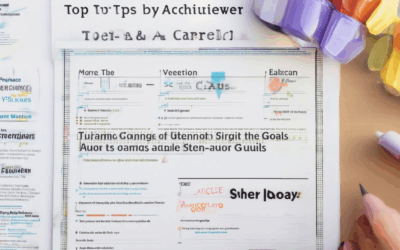Building healthy relationships is one of life’s most essential skills, forming the foundation for personal happiness, success, and overall well-being. While there are countless theories and frameworks to guide us, the concept of the “5 Cs” provides a simple yet powerful approach to understanding and nurturing these connections. From communication to compassion, trust to teamwork, and empathy to respect, these core elements lay the groundwork for building relationships that thrive through shared understanding and mutual growth. Whether you’re seeking to strengthen existing bonds or build new ones, mastering these principles can lead to healthier, more meaningful interactions. In this article, we’ll explore the key characteristics of a healthy relationship, the importance of emotional intelligence, and actionable strategies to foster connections that last a lifetime. Let’s dive in and discover how you can create and maintain the relationships that bring you joy and fulfillment.

What Are the 5 C’s to Developing Healthy Relationships?
- Communication
- Effective communication fosters understanding and strengthens connections.
- Listen actively and share thoughts openly to resolve conflicts and build trust.
- Use “I” statements to express feelings without blaming others.
- Practice empathy by understanding others’ emotions and perspectives.
- Be kind and supportive, especially during difficult times.
- Forgive mistakes and show understanding in conflicts.
- Work together towards shared goals and compromises.
- Respect each other’s boundaries and contributions.
- Foster teamwork by sharing responsibilities and celebrating successes.
- Address issues calmly and seek mutually beneficial solutions.
- Use “win-win” thinking to resolve disagreements.
- Stay composed and avoid raising voices or making accusations.
- Become emotionally close by spending quality time together.
- Build trust and establish a sense of security.
- Express appreciation and acknowledge each other’s efforts.
What Builds a Healthy Relationship?
A healthy relationship is built on strong foundations of communication, trust, and mutual respect. Here’s a breakdown of key components and strategies to foster a meaningful connection:
Open Communication
- Active listening: Pay attention to your partner’s thoughts and feelings without interrupting.
- Honesty: Be transparent about your emotions and experiences.
- Clarity: Express your needs and concerns in a constructive manner.
- Seeking Understanding: Show curiosity about your partner’s perspective.
Avoid:
- Withholding information or being evasive.
- Assuming intentions without communication.
- Ignoring red flags or discomfort.
Trust and Reliability
- Become someone your partner can rely on.
- Be honest about your actions and intentions.
- Respect their boundaries and keep promises.
- Build emotional intimacy through shared experiences.
Avoid:
- Lying or withholding truths.
- Breaking commitments without reason.
- Overlooking trust issues unaddressed.
Mutual Respect
- Value each other’s individuality and strengths.
- Admit flaws and work on improvements together.
- Support personal and professional goals.
- Be open to compromise and understanding.
Avoid:
- Dismissing their opinions or feelings.
- Belittling their achievements or efforts.
- Assuming superiority or dominance.
Emotional Availability
- Be present mentally and emotionally during interactions.
- Express love and affection regularly.
- Share joy and celebrate milestones together.
- Offer comfort and support during tough times.
Avoid:
- Being emotionally distant or preoccupied.
- Ignoring expressions of love and affection.
- Minimizing their emotional needs.
Shared Values and Goals
- Align on core values like honesty and kindness.
- Work towards common objectives together.
- Support each other’s aspirations and interests.
- Foster a sense of teamwork and collaboration.
Avoid:
- Having conflicting core values.
- Setting opposing life goals.
- Ignoring shared interests and priorities.
Growth and Adaptation
- Be open to change and evolution.
- Support personal and relational growth.
- Adapt to each other’s changing needs.
- Stay curious about maintaining the relationship.
Avoid:
- Resisting change and clinging to old habits.
- Being rigid or inflexible.
- Ignoring signs of relationship growth needs.
Quality Time and Connection
- Schedule regular, meaningful interactions.
- Create memorable experiences together.
- Connect through shared activities and interests.
- Be present and engaged during quality time.
Avoid:
- Scheduling relationships as obligations.
- Not prioritizing time together.
- Being distracted during connections.
Conflict Resolution
- Address issues calmly and constructively.
- Listen to each other during conflicts.
- Find mutually beneficial solutions.
- Forgive and move forward without grudges.
Avoid:
- Attacking rather than discussing.
- Hold onto anger or resentment.
- Using conflict as a weapon.
Common Ground
- Enjoy similar interests and values.
- Support each other’s hobbies and passions.
- Be curious about each other’s worlds.
- Share joy and laughter regularly.
Avoid:
- Ignoring shared interests and differences.
- Being dismissive of each other’s passions.
- Staying disconnected and separate.
Professionalism and Balance
- Keep personal and professional boundaries.
- Be respectful in all interactions.
- Balance personal and couple time wisely.
- Communicate effectively about expectations.
Avoid:
- Blurring personal and professional roles.
- Disrespecting boundaries in interactions.
- Overprioritizing one area over the relationship.
Long-Term Commitment
- Be willing to invest time and effort.
- Commit to overcoming challenges together.
- Plan for a future together.
- Stay loyal and dedicated.
Avoid:
- Being casual about commitment.
- Ignoring long-term planning.
- Being disloyal or unfaithful.
Conclusion
A healthy relationship thrives on mutual effort, understanding, and growth. By focusing on these key areas, you can build a bond that stands the test of time and brings lasting happiness.
[Learn more about building and maintaining healthy relationships on 7del.net](https://7del.net/relationships)

The 5 A’s of a Healthy Relationship
- Affection
- Communication
- Appreciation
- Active Listening
- Accountability
Building and maintaining a healthy relationship requires a combination of emotional intelligence, mutual respect, and proactive behavior. Here’s a breakdown of the essential elements:
A. Affection
Expressing affection is crucial for emotional bonding. This can be shown through physical touch, verbal compliments, or simple acts of kindness. Affection fosters intimacy and makes individuals feel valued and loved.
B. Communication
Effective communication is the foundation of any strong relationship. Listen actively, share your thoughts honestly, and avoid misunderstandings by addressing issues promptly. Clear and respectful dialogue helps resolve conflicts and strengthens connections.
C. Appreciation
Recognizing and acknowledging the positive aspects of your partner’s life and contributions to your relationship is key. Regularly express gratitude for small gestures and big achievements to foster a sense of appreciation and mutual support.
D. Active Listening
Listening is more than just hearing. Practice active listening by giving others your full attention, showing empathy, and responding thoughtfully. This builds trust and ensures that both parties feel heard and understood.
E. Accountability
Taking responsibility for your actions and commitments is essential. Admit mistakes, learn from them, and work together to overcome challenges. This demonstrates maturity and a willingness to grow as a couple.

What Are the 3 C’s of Relationship Building?
The foundation of successful relationship building revolves around three key principles: Communication, Compatibility, and Consent. These elements work synergistically to foster meaningful connections and long-term success.
1. Communication
Effective communication lies at the heart of every strong relationship. It involves actively listening to your partner, expressing your thoughts and feelings openly, and responding with empathy. Clear communication helps bridge misunderstandings and strengthens trust. Remember, communication is not just about speaking but also about understanding and being understood.
- Active Listening: Pay full attention to your partner without interrupting, showing genuine interest in their perspective.
- Transparency: Be honest about your emotions, desires, and concerns, fostering an environment of trust and vulnerability.
- Empathy: Try to see things from your partner’s viewpoint, validating their feelings and experiences.
2. Compatibility
Compatibility is about how well two individuals align in terms of values, goals, and lifestyles. It’s not just about shared preferences but also about mutual respect and support. Compatibility ensures that both partners feel valued and motivated to grow together.
- Shared Values: Aligning on core beliefs and priorities creates a solid emotional connection.
- Mutual Respect: Admiring and appreciating each other’s qualities, even when they differ.
- Supportive Environment: Encouraging each other’s individuality and professional aspirations.
3. Consent
Consent is a fundamental aspect of any healthy relationship. It encompasses both physical and emotional agreement, ensuring that all parties feel comfortable and respected. Consent is ongoing and can be withdrawn at any time, emphasizing the importance of open dialogue and mutual respect.
- Physical and Emotional Agreement: Both partners must mutually agree to all aspects of their interactions.
- Boundaries: Respecting each other’s personal space and limits fosters a safe and trusting environment.
- Growing Together: Consensual relationship building allows both individuals to thrive individually and collectively.
By mastering these three Cs—Communication, Compatibility, and Consent—you can build relationships that are not only strong but also deeply meaningful.
Understanding the 3-Month Relationship Rule
The 3-month rule in relationships is a helpful guideline to navigate the early stages of a partnership. It suggests breaking the relationship journey into three distinct phases, each lasting approximately three months:
- First Three Months: Exploration Phase
- During this initial phase, the focus is on getting to know each other deeply. Couples often engage in casual dating, exploring shared interests, values, and lifestyles. This stage is about building a strong foundation of trust and understanding.
- Next Three Months: Deepening Connection Phase
- After the initial exploration, the relationship enters a deeper connection phase. This involves spending more quality time together, prioritizing each other, and considering living arrangements. Communication becomes more intense, and mutual goals start to align.
- Final Three Months: Long-Term Assessment Phase
- The final three months are crucial for evaluating the relationship’s potential for long-term commitment. Key decisions may include cohabiting, discussing future plans, and assessing compatibility based on shared values and life goals. This phase helps determine if both partners are ready for a committed, lifelong partnership.
By following this structured approach, individuals can make informed decisions about their relationships, fostering stronger, more meaningful connections.

What Are the Four Characteristics of a Healthy Relationship?
An effective healthy relationship is built on four key pillars that foster growth, understanding, and connection. Here’s a breakdown of these essential characteristics:
- Effective Communication: Healthy relationships thrive on open and honest dialogue. Both partners should feel comfortable expressing their thoughts and feelings. Active listening is as important as speaking, ensuring that each person feels heard and valued.
- Mutual Respect: Respecting each other’s individuality, boundaries, and perspectives is crucial. A healthy relationship allows both individuals to grow independently while supporting each other’s goals and aspirations.
- Trust and Reliability: Trust is the foundation of any strong relationship. It’s built over time through consistent actions, honesty, and reliability. Without trust, it’s difficult to maintain intimacy and collaboration.
- Emotional Connection: A deep emotional bond creates a sense of security and belonging. Shared experiences, laughter, and moments of vulnerability help strengthen the emotional ties between partners.
These characteristics work together to create a supportive environment where both people can flourish individually and as a couple. By nurturing these traits, relationships become more resilient and fulfilling over time.




0 Comments